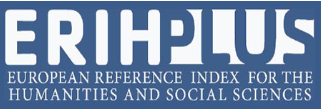THE RELATIONSHIP BETWEEN BIG FIVE PERSONALITY TRAITS AND WILLINGNESS TO COMMUNICATE
Apstrakt
The relationship between personality traits and willingness to communicate (WTC) in English language teaching (ELT) was investigated in this study. The examinees included 303 university students at Faculty of Technical Sciences in Novi Sad. Data were gathered using the International Personality Item Pool (IPIP; Goldberg, 2001) and Willingness to Communicate (WTC) Scale (McCroskey, 1992). When talking to strangers 33.7% of the examinees obtained low scores on WTC, 49.5% had medium levels of WTC and 16.8% had high WTC. When talking to acquaintances 36.3% of the examinees reported low levels of WTC, 46.9% reported moderate levels and 16.8% reported high levels of WTC. Similar results were reported when talking to friends. In addition, coefficients revealed significant positive correlations between WTC in EFL and all Big Five dimensions. Interpretation of the coefficients suggest that there was a small correlation between WTC in EFL and Conscientiousness, Emotional stability and Agreeableness. Moderate to high correlations were between WTC in EFL and Extraversion and Intellect. It was concluded that the interaction of the Big Five Personality Traits may significantly contribute to the promotion and production of WTC in learning English as a second language.
Reference
Clement, R., Baker, S. C., & MacIntyre, P. D. (2003). Willingness to communicate in a second language: The effects of context, norms, and vitality. Journal of Language and Social Psychology, 22, 190-209.
Cohen, J. (1988). Statistical power analysis for the behavioral sciences (2nd ed.).Hillsdale, NJ: Lawrence Earlbaum Associates
Costa P., McCrae, R., & Kay, G. (1995). Person, places, and personality: Career assessment using the revised NEO personality inventory. Journal of Career Assessment, 3, 123-139.
Dörnyei, Z. (2009). The psychology of second language acquisition. Oxford Applied Linguistics. OUP Oxford.
Dörnyei, Z. (2006). Individual differences in second language acquisition. AILA Review, 19, 42-68.http://doi.org/b8s5fb
Ghonsooly, B., Khajavy, G. H., & Asadpour, S. F. (2012). Willingness to communicate in Englishamong Iranian non-English major university students. Journal of Language and Social Psychology, 31, 197-211. http://doi.org/t9z
Goldberg, L. R. (1992). The development of markers for the Big-Five factor structure. Psychological Assessment, 4, 26-42. http://doi.org/cd8
Goldberg, L. R. (2001). International Personality Item Pool. Retrieved from http://bit. ly/1AfXuFc
Gregersen, T., & MacIntyre, P. D. (2014). Capitalizing on individual differences: From premise topractice. Bristol, UK: Multilingual Matters.
Haslam N. (2007). The latent structure of mental disorders: A taxometric update on the categorical vs dimensional debate. Current Psychiatry Reviews: 3:172–177. Hashimoto, Y. (2002). Motivation and willingness to communicate as predictors of reported L2 use: The Japanese ESL context. Second Language Studies, 20 (2), 2970.
Kenrick, D.T., & Funder, D.C. (1998). Profiting from controversy: Lessons from the person-situation debate. American Psychologist, 43, 23-34.
MacIntyre, P.D., (2007). Willingness to communicate in the second language: Understanding the decision to speak as a volitional process. Modern language journal 91. 564576.
MacIntyre, P., & Charos, C. (1996). Personality, attitudes, and affect as predictors of second language communication. Journal of Language and Social Psychology, 15, 3-26.
MacIntyre, P., Clement, R., Dornyei, Z. & Noels, K. (1998). Conceptualizing willingness to communicate in a L2: A situational model of L2 confidence and affiliation. The Modern Language Journal, 82, 545-562.
MacIntyre, P. D., Babin, P. A., & Clément, R. (1999). Willingness to communicate: Antecedents and consequences. Communication Quarterly, 47, 215-229.
MacIntyre, P. D., Burns, C., & Jessome, A. (2011). Ambivalence about communicating in a second language: A qualitative study of French immersion students’ willingness to communicate. The Modern Language Journal, 95, 81-96. http:// doi.org/ckhp25
MacIntyre, P. D. & MacKinnon, S. P. (2007). Embracing affective ambivalence: A research agenda for understanding the interdependent processes of language anxiety and motivation. Presented at City University of Hong Kong, June, 2007. McCrae, R. R. and Costa, P. T. Jr. (1992). `Discriminant validity of NEO-PI-R facets’, Educational and Psychological Measurement, 52: 229±237.
McCroskey, J. C., & Richmond, V. P. (1990). Willingness to communicate: A cognitive view. In M. Booth-Butterfield (Ed.), Communication, cognition, and anxiety (pp. 19-37). Newbury Park, CA: Sage. (a)
McCroskey, J.C. (1992). Reliability and Validity of the Willingness to Communicate Scale. Communication Quarterly, 40, 16-25.
McCroskey, J. C., & Richmond, V. P. (2013). Willingness to communicate (WTC). Measurement instrument database for the social science. Retrieved from http:// bit.ly/1rZgalB
Oz, H. (2014). Big Five Personality Traits and Willingness to Communicate among Foreign Language Learners in Turkey, Social behavior and personality, 42(9): 1473-1482.
Pavičić Takač, V., & Požega, D. (2011). Personality traits, willingness to communicate and oral proficiency in English as a foreign language. In L. Pon, V. Karabaliş, & S. Cimer (Eds.), Applied linguistics today: Research and perspectives (pp. 67-82). Berlin, Germany: Lang.
Peng, J.-E. (2011). Towards an ecological understanding of willingness to communicate in EFL classrooms in China. System, 40, 203-213. http://doi.org/t96
Simic, M. and Tanaka, T. (2008). Language Context in the Willingness to Communicate Research Works: A Review. 71-88. ousar.lib.okayama-u.ac.jp/file/14186/20090106041457/26_71.pdf
Swain, M. (2000). The output hypothesis and beyond: Mediating acquisition through collaborative dialogue. In J. P. Lantolf (Ed.), Socio cultural theory and second language learning (pp. 97114). Oxford: Oxford University Press.
Swain, M., & Lapkin, S. (2002). Talking it through: two French immersion learners’ response to reformulation. International Journal of Educational Research, 37, 285-304.
Zarrinabadi, N. (2014). Communicating in a second language: Investigating the effect of teacher onlearners’ willingness to communicate. System, 42, 288-295. http:// doi.org/t97







